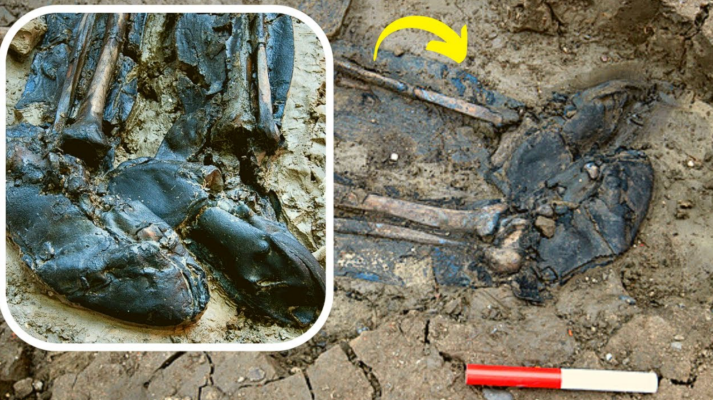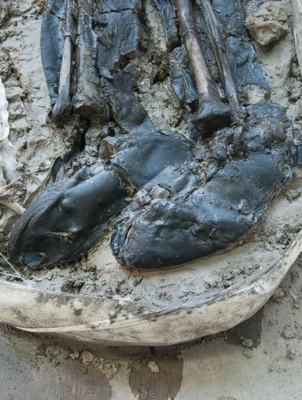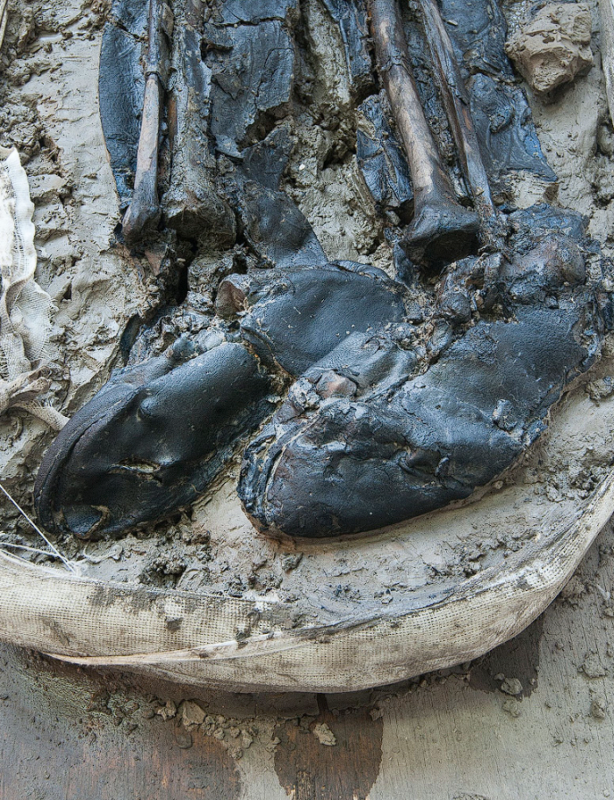Archaeologists in London have made a fascinating discovery—a medieval skeleton still wearing his boots. Found during an excavation for the Thames Tideway Tunnel, this rare find provides insight into life and death in 15th-century England. The mysterious circumstances surrounding the skeleton’s final moments raise intriguing questions about his identity, occupation, and cause of death.
A Rare Discovery: The Skeleton With Boots
An Unusual Find in the Thames Tideway Tunnel
During excavations for London’s massive “super sewer” project, archaeologists uncovered a medieval skeleton in an unexpected state—his boots were still intact. According to Beth Richardson of the Museum of London Archaeology (MOLA), finding boots from the late 15th century is rare, and discovering a skeleton still wearing them is even more extraordinary.
Thigh-High Boots: A Clue to His Identity?
The boots, which were thigh-high with the tops turned down, would have been expensive at the time. This raises questions about how the man acquired them—were they secondhand, stolen, or a sign of his social status? Their design suggests they may have been worn for work in wet and muddy conditions, hinting at his possible occupation.
Theories About His Mysterious Death
An Accidental Death?
Unlike typical burials, the skeleton was found face down with his right arm over his head and his left arm twisted behind him. This unusual position suggests that he was not deliberately buried, leading archaeologists to believe he died accidentally. Possible causes include drowning in the Thames or getting trapped in its thick mud.

Life and Work Along the Thames
Five centuries ago, this area of the Thames was a bustling hub of commerce, filled with wharves, warehouses, and taverns. The presence of the medieval Bermondsey Wall, a 15-foot-high earthwork designed to protect against tidal surges, suggests that the man may have worked along the river, possibly as a sailor, fisherman, or laborer.
Physical Clues: Who Was the Booted Man?
Signs of a Life of Hard Labor
Analysis of the skeleton suggests the man was physically strong, with pronounced muscle attachments on his chest and shoulders. According to osteologist Niamh Carty of MOLA, his bones indicate years of heavy, repetitive labor. Despite being in his early thirties, his biological age appeared much older due to the physical toll of his work.
Health Issues and Injuries
The man suffered from osteoarthritis, and his vertebrae showed signs of fusing from years of strenuous activity. He also had injuries, including a broken nose and blunt force trauma to his forehead that had healed before death. Wounds to his left hip suggest he may have walked with a limp.
A Mudlarker, Sailor, or Fisherman?
Evidence of a Maritime Connection
One theory is that the man was a sailor or fisherman, given his robust build and the grooves in his teeth—possibly from clenching a rope repeatedly. This would explain his work-related injuries and the need for waterproof boots.
The Mudlarker Hypothesis
Another possibility is that he was a “mudlarker,” someone who scavenged for valuable objects along the Thames at low tide. His wader-like boots would have been ideal for such work, and the hazardous nature of the job may explain his untimely demise.

Unraveling the Mystery: Ongoing Investigations
Isotope Analysis for Clues About His Origins
Archaeologists are conducting isotope analysis on the skeleton to determine where the man grew up, whether he was a London native or an immigrant, and what his diet consisted of. These findings will offer further insight into his life and background.
A Story Finally Told
For centuries, the booted man’s story remained unknown, lost to time beneath the Thames. Now, through archaeological research and scientific advancements, his history is slowly being reconstructed. “His family never had any answers or a grave,” says Carty. “What we are doing is an act of remembrance. We’re allowing his story to finally be told.”
This remarkable discovery sheds light on the harsh realities of medieval life and the hidden history beneath London’s modern landscape. As investigations continue, more secrets of the booted man—and the world he lived in—may yet be revealed.


CÁC TIN KHÁC
Mary Walton: The Forgotten Inventor Who Helped Clean Up America’s Cities
Tomb of Queen Nefertari in the Valley of the Queens, Egypt
Discover the Hypostyle Hall of the Temple of Hathor at Dendera
Venus de Losange: Unveiling the Mystery of a 20,000-Year-Old Paleolithic Icon